by Frank Rose
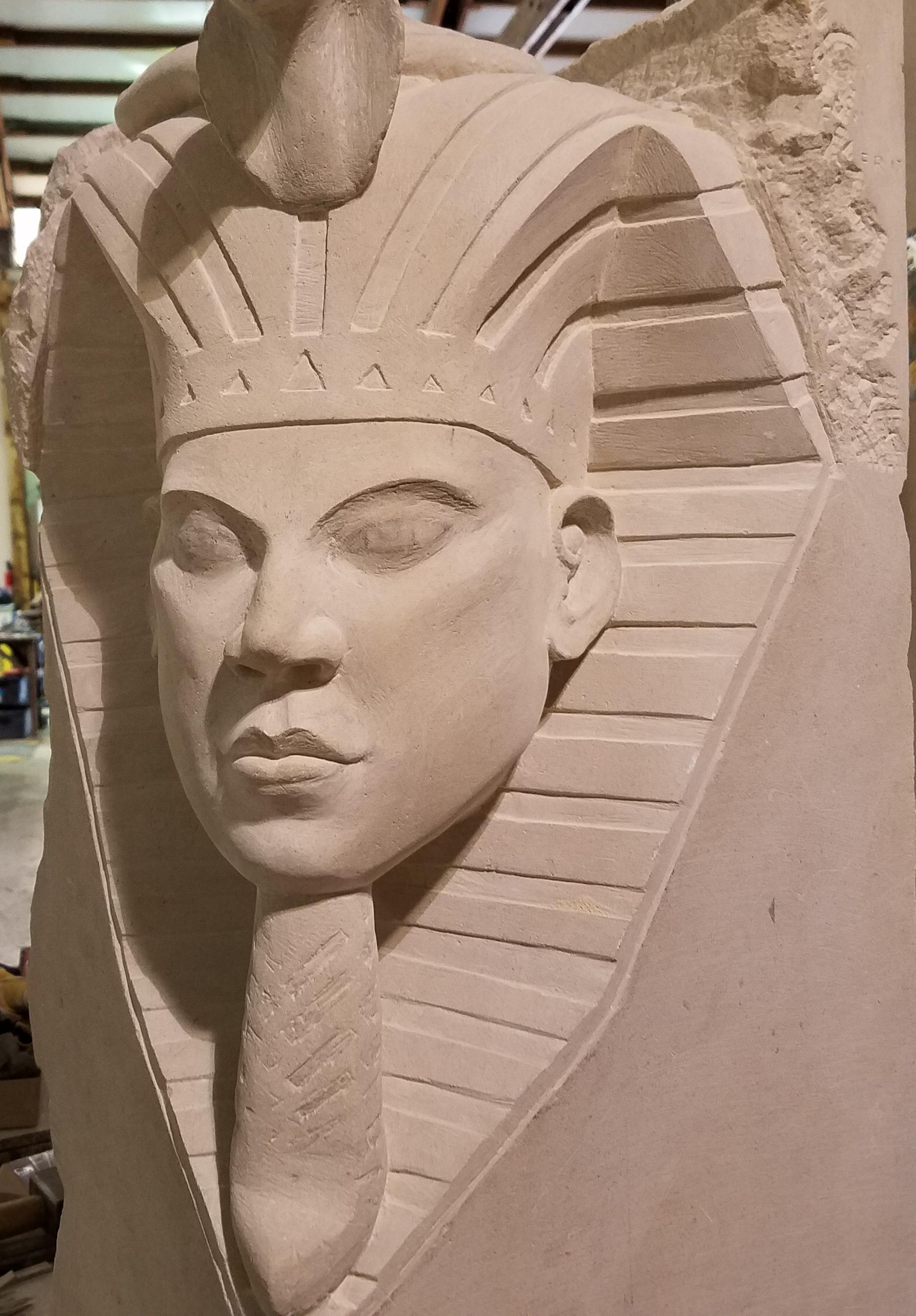 From early grade school, I was interested in art. Although I spent a good part of my early life on the high seas with the US Navy, I always took the opportunity to view art in Asian and European cities and while on shore duty stations, I attended life drawing and painting classes offered at local colleges. My most enjoyable learning experience in life drawing and oil painting took place at the Torpedo Factory Art Center in Alexandria, Virginia. Many of the art teachers working there were highly successful artists.About eight or ten years ago I rented a small space at the Freeland Art Studios on Whidbey Island, primarily to create water-based clay portraiture.
From early grade school, I was interested in art. Although I spent a good part of my early life on the high seas with the US Navy, I always took the opportunity to view art in Asian and European cities and while on shore duty stations, I attended life drawing and painting classes offered at local colleges. My most enjoyable learning experience in life drawing and oil painting took place at the Torpedo Factory Art Center in Alexandria, Virginia. Many of the art teachers working there were highly successful artists.About eight or ten years ago I rented a small space at the Freeland Art Studios on Whidbey Island, primarily to create water-based clay portraiture.
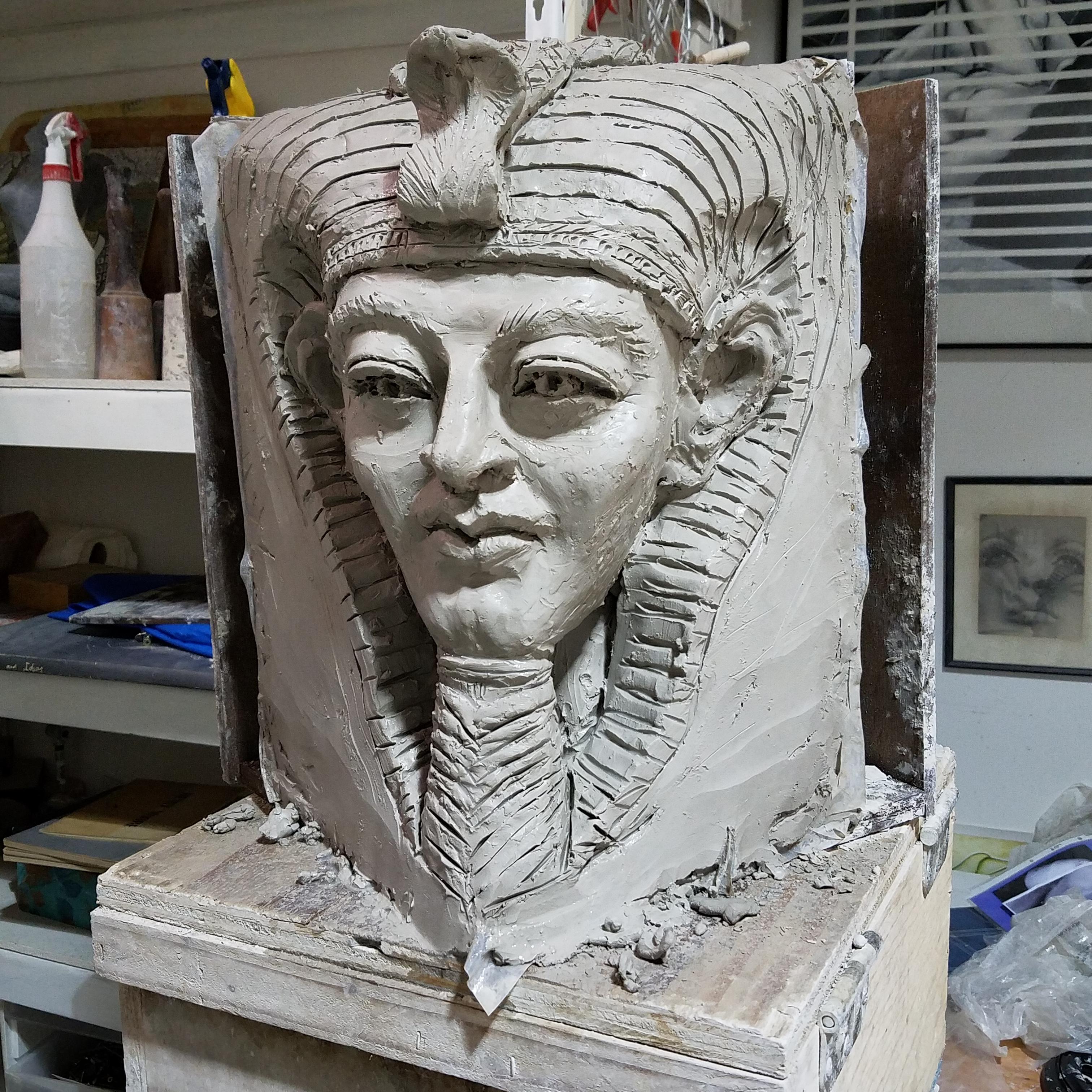 The clay portraiture process taught me how hard it is to get a likeness and to keep it once found. It also helped me to better understand the construction of the cranium, allowing me to create a very credible portrait of someone that I have never met.
The clay portraiture process taught me how hard it is to get a likeness and to keep it once found. It also helped me to better understand the construction of the cranium, allowing me to create a very credible portrait of someone that I have never met. Working in stone was not completely my idea. As it turned out, about a year and half ago, I was challenged by studio associates Sue Taves, Lloyd Whannell, Woody Morris, Lane Tompkins and Penelope Crittenden to create a life-size portrait, using only hand tools, in one-sixth of a limestone column measuring 13x13 inches x 5 1/2 feet high. It was Texas limestone, soft white, clean and beautiful throughout, a gift to the Freeland Art Studios by the very generous Scott Hackney of the Marenakos Rock Center.
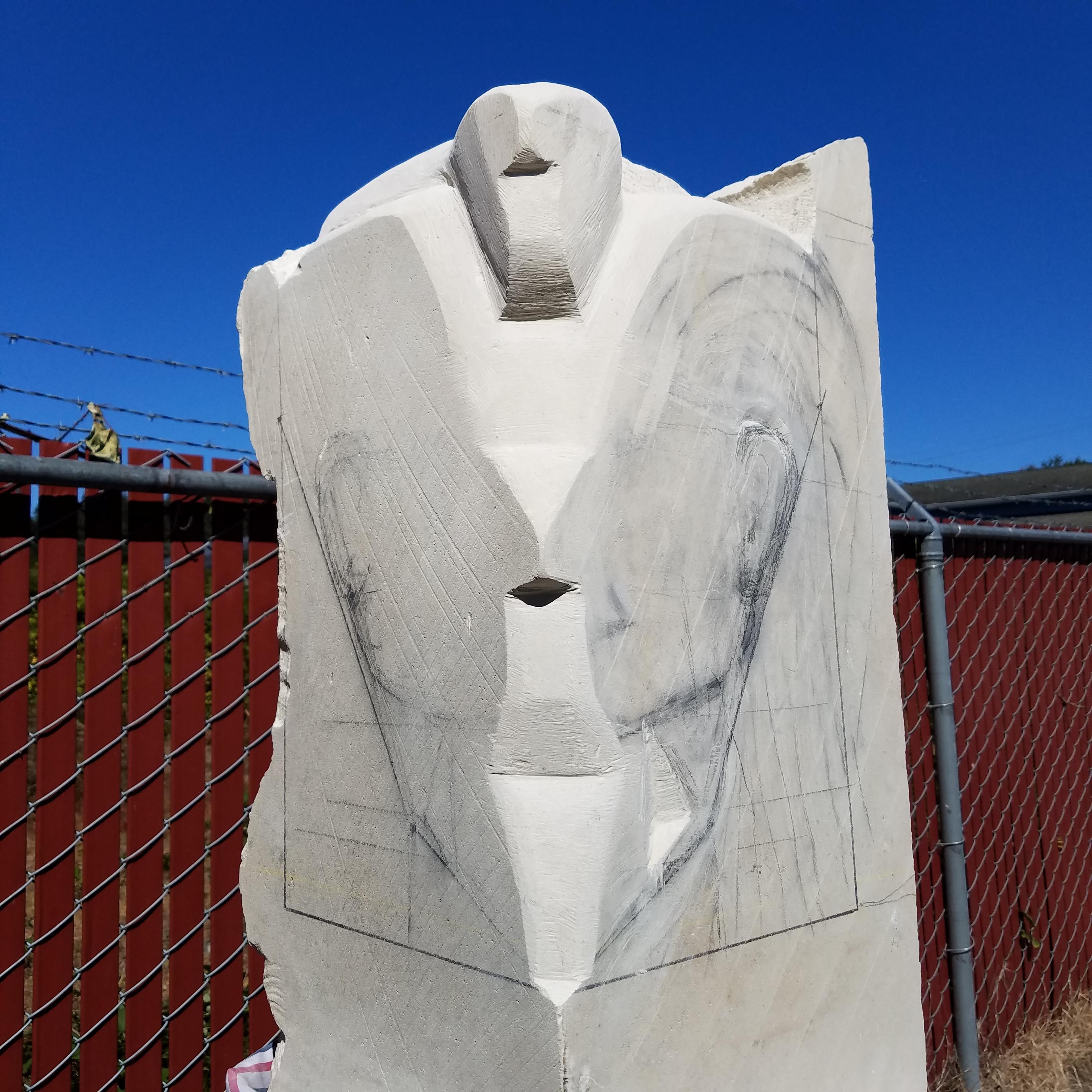
The basic idea is that all six of us would sculpt something in the portion allocated to each artist. We drew straws for the section location we would work on. I drew a top section position. This exciting artistic challenge for me, became a labor-driven, creative obsession that would involve many months of my life. I made an early decision that the work would be an ancient Egyptian themed portrait. I first duplicated in size my allotted section of limestone in clay. On the clay maquette, I established the horizontal and vertical reference points and took surface depth measurements to the facial bone points. Establishing the forehead angle plane was critical in developing the eye centers and profile of lips nose and jaw lines. Interestingly, the headdress, beard and snake turned out to be the most labor-intensive parts of the work. The facial features found their own way as the piece progressed to the finish point, saving the shape of the pupils and ears for the very last touches.
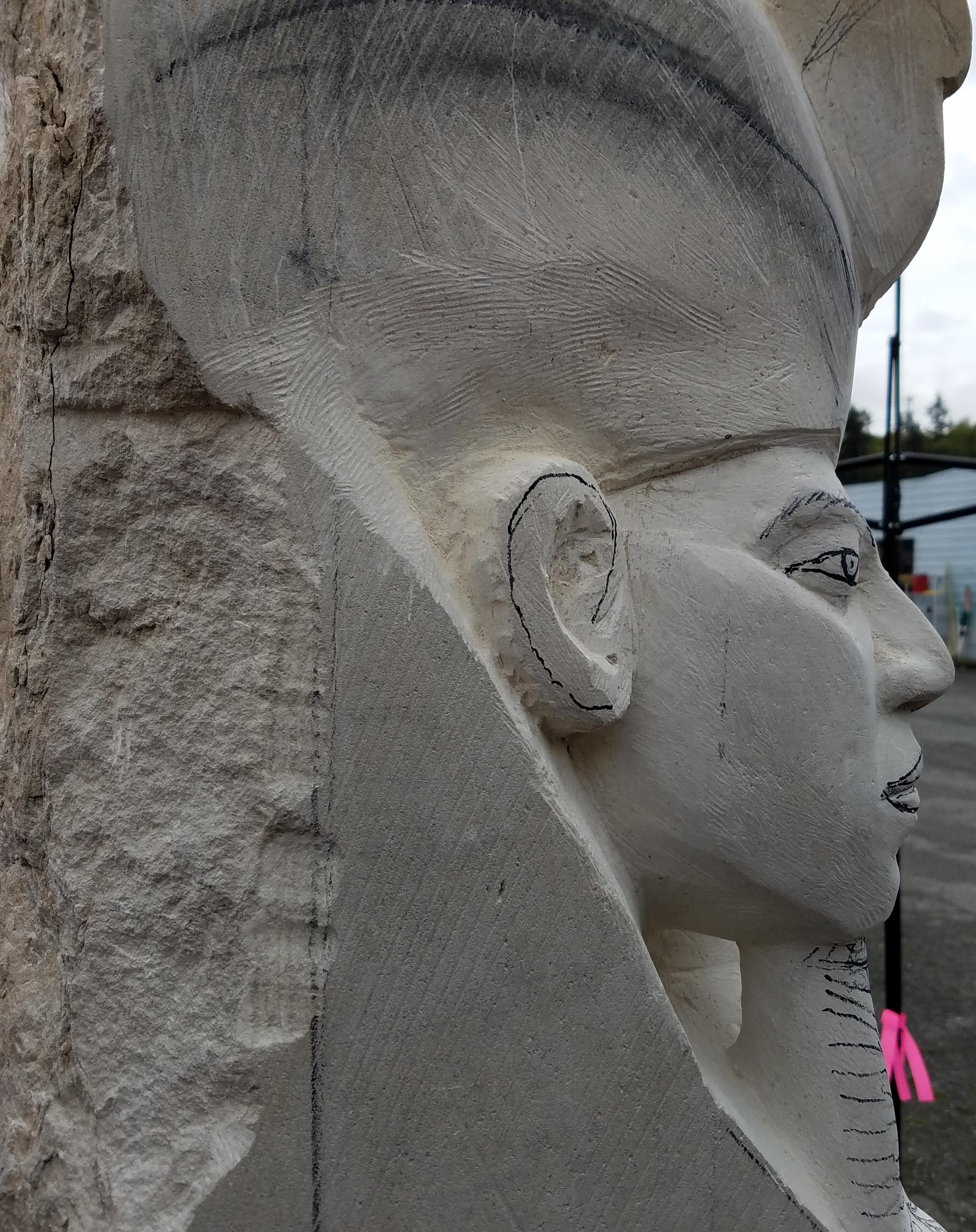


Months passed and I slowly, but surely transferred the clay image to stone. During this time, my studio mates surprised me by generously agreeing to give up their allotted areas, so that the stone would belong to my Egyptian alone, and so the piece stands today.
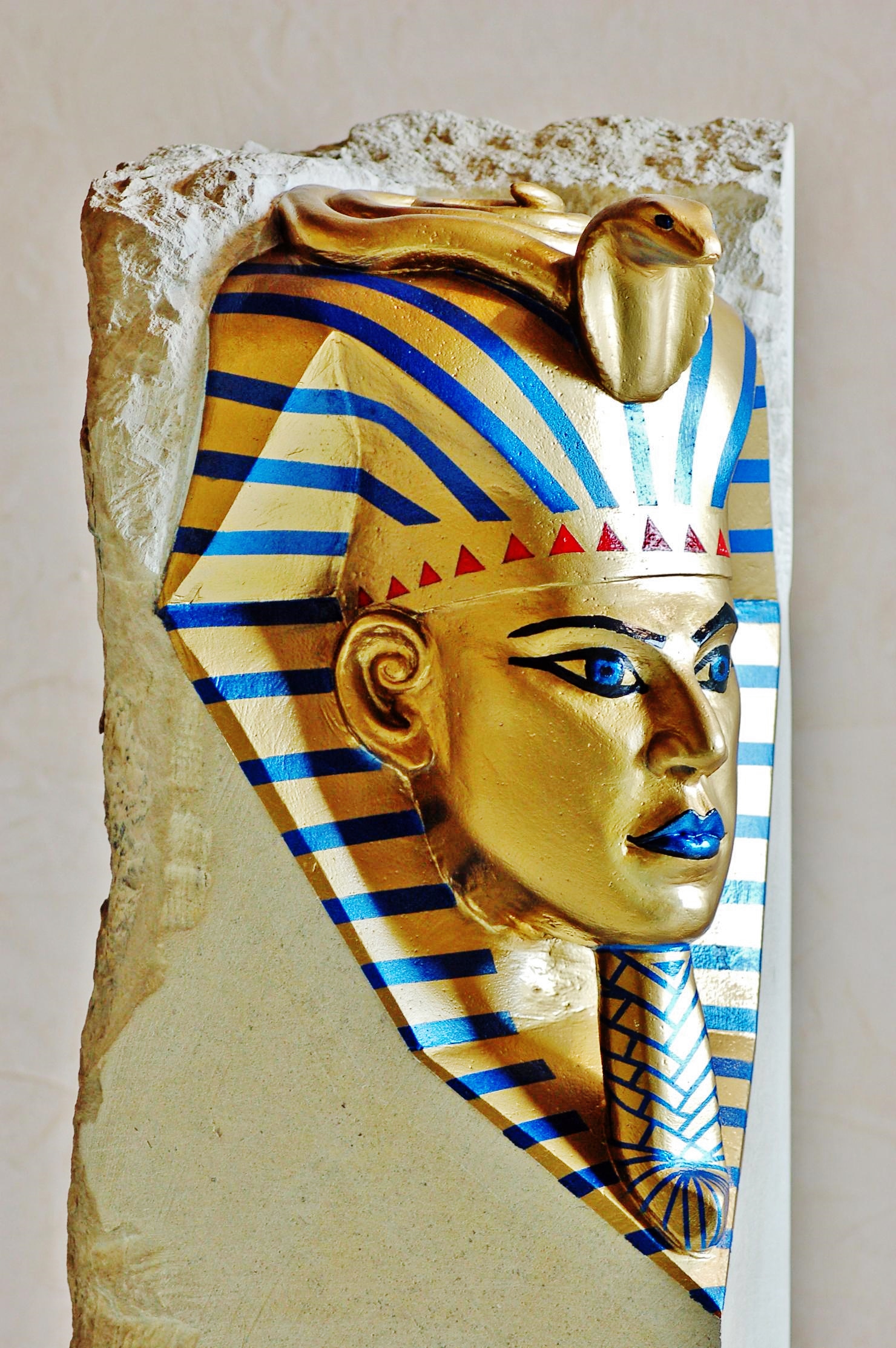 After reaching a certain point of satisfaction with the sculpted image, I entertained the thought and carried out the process of painting the Egyptian along the lines of the famous Pharaoh Tutankhamun’s golden funerary mask. Although I was not pleased with the time-consuming paint job, many thought it was quite striking. I decided to remove the paint for a number of reasons, one being that the beautiful limestone was no longer an element of the work and the garish paint job reminded me of the papier mâché art that might be found on a Harrison Ford movie set.
After reaching a certain point of satisfaction with the sculpted image, I entertained the thought and carried out the process of painting the Egyptian along the lines of the famous Pharaoh Tutankhamun’s golden funerary mask. Although I was not pleased with the time-consuming paint job, many thought it was quite striking. I decided to remove the paint for a number of reasons, one being that the beautiful limestone was no longer an element of the work and the garish paint job reminded me of the papier mâché art that might be found on a Harrison Ford movie set. 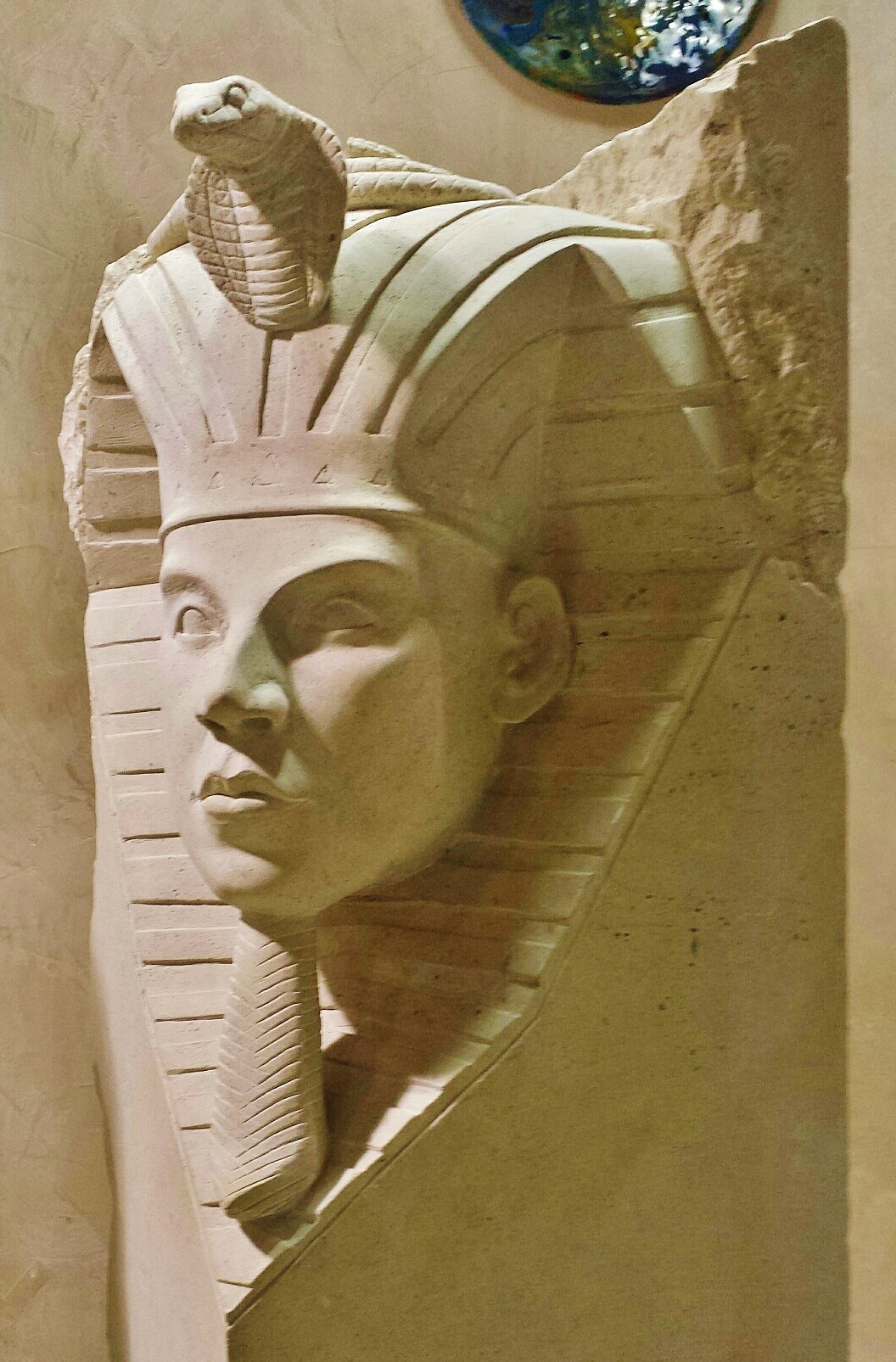 Removal of the paint left the masking tape lines of the headpiece, giving me the idea to carve out every other strip of the headpiece and the beard, taking many hours of refinement with fine files and emery paper
Removal of the paint left the masking tape lines of the headpiece, giving me the idea to carve out every other strip of the headpiece and the beard, taking many hours of refinement with fine files and emery paper The Egyptian is currently on display at the Freeland Art Studios 1660 Roberta Ave. and will be part of Freeland Art Studios open house event on Saturday, June 9th of this year.
In closing, I want to thank my studio mates, especially Lane Tompkins and Lloyd Whanell for their generosity in sharing with me tools, knowledge, experience and their passion for carving in stone.

